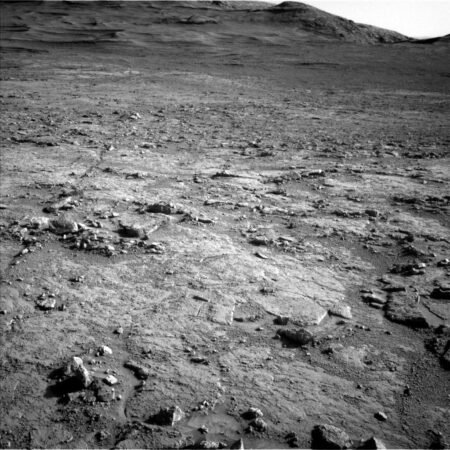Essential Insights
-
Curiosity rover has successfully completed a 48-meter drive to explore a new mapping area named after Uyuni, Bolivia, reflecting its geological features.
-
The exploration focuses on drier depositional environments in the Mount Sharp stratigraphy, with target names inspired by Uyuni and the Atacama Desert.
-
The upcoming two-sol plan includes assessing rock targets ("Flamingo" and "Tacos") with various scientific tools, while also capturing imagery of potential impact structures.
- The mission aims to uncover clues about ancient Martian conditions as Curiosity advances toward significant geological formations ahead.
Curiosity Rover Moves into New Exploration Phase at Uyuni Quad
Curiosity has made significant strides in its mission on Mars. Over the weekend, the rover successfully completed its activities at the “Altadena” drill site. It then embarked on an approximately 48-meter drive, which translates to about 157 feet. This successful journey placed Curiosity in a new mapping quadrangle, known informally as the Uyuni Quad.
The Uyuni Quad takes its name from the town of Uyuni, Bolivia. This region is famous for its vast salt flats, making the name fitting as Curiosity explores drier depositional environments at higher elevations of Mount Sharp. Each of Curiosity’s exploration areas is divided into 1.5-kilometer blocks, named after towns with populations under 100,000. This systematic naming helps provide context as the rover examines varying geological features.
In this new quad, the science team has planned an exciting array of activities. They will conduct contact science on a bedrock target named “Flamingo.” Using instruments like the Alpha Particle X-ray Spectrometer (APXS) and the Mars Hand Lens Imager (MAHLI), the team will assess the rock’s chemistry and texture. Additionally, they’re preparing a Mastcam mosaic of “Los Patos” to better understand a potential impact crater in the area.
Other targets like “Tacos” and “La Lava” will also receive attention. These observations aim to provide insight into the local geology and active surface processes. Notably, Curiosity will also capture images to monitor Martian atmospheric conditions, such as clouds and dust.
Looking ahead, Curiosity aims to explore larger boxwork structures in the region. These formations may reveal clues about the ancient conditions on Mars and contribute to our understanding of the planet’s history.
As Curiosity ventures deeper into the Uyuni Quad, it symbolizes humanity’s thirst for knowledge and technological advancement. Each finding enhances our understanding of Mars, which could one day inform future missions or even human exploration. The work of Curiosity not only expands scientific horizons but also inspires innovations in technology and robotics that have far-reaching applications on Earth as well.
Continue Your Tech Journey
Dive deeper into the world of Cryptocurrency and its impact on global finance.
Access comprehensive resources on technology by visiting Wikipedia.
SciV1

